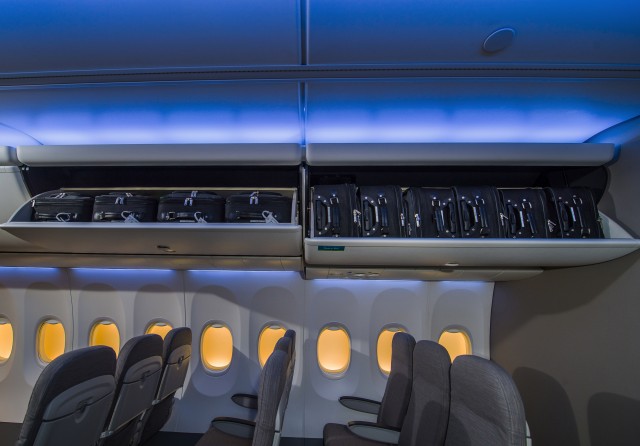
Space Bins in the 737 Configuration Studio – Photo: The Boeing Company
During Aviation Geek Fest 2015, a small number of us AvGeeks (seven, to be exact: me, Mal, Dan, Christy, Michael, Michael #2, and Derek — who didn’t seem to make it into the video, but still was great) were invited by Boeing to preview their new Space Bin design and offer our feedback. It was previously announced that Alaska Airlines will be the launch customer for the Space Bin (first aircraft should be delivered by the end of the year), so as a frequent flier on Alaska, I was very interested to see the overhead bin of the future. (Also, this was probably the closest I will ever come to my not-so-secret dream of appearing in an airline safety demonstration video.)
The Space Bin offers a significant increase in capacity, with each bin holding six standard-sized rollaboard bags, instead of four. According to Boeing, that allows for 194 total bags in Space Bins on a 737-900ER or 737 MAX 9, compared to 132 in the current bin configuration; 174 compared to 118 on a 737-800 or 737 MAX 8; and 130 compared to 90 on a 737-700 or 737 MAX 7.
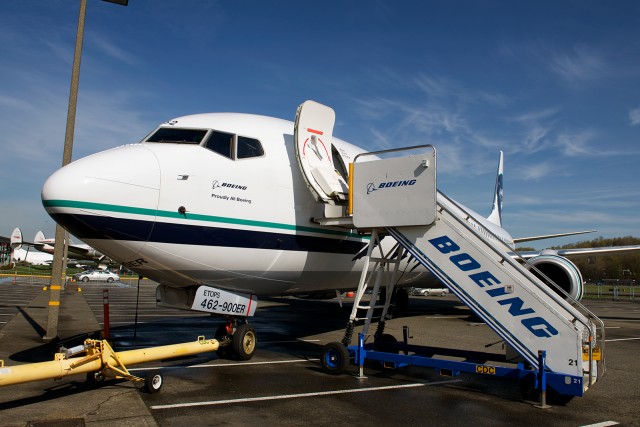
It’s not every day that you see any sort of 737 in the Museum of Flight parking lot – Photo: Bernie Leighton | AirlineReporter
Over the past few years, Alaska Airlines has been making gradual enhancements to its overall product. New seats from Recaro, in-seat power, Wi-Fi from Gogo, Starbucks coffee, and tablet-based in-flight entertainment (IFE). These improvements have all come together to create a product Alaska is calling Alaska Beyond. The most noticeable addition to their product is improving upon their dining options.
To complete the Alaska Beyond project (the last few aircraft will be reconfigured by the end of April), Alaska decided to have a party. Now, that’d be great on its own, but they made it even more impressive by taking a 737-990ER (N462AS, if you wondered) out of service for a day, and gave a two-hour demonstration of the product in flight. Who was to attend? Well, media, stakeholders in the Alaska Beyond product (including Tom Douglas, three-time James Beard award-winning chef), and Alaska’s 0.01% top-tier frequent flyers.
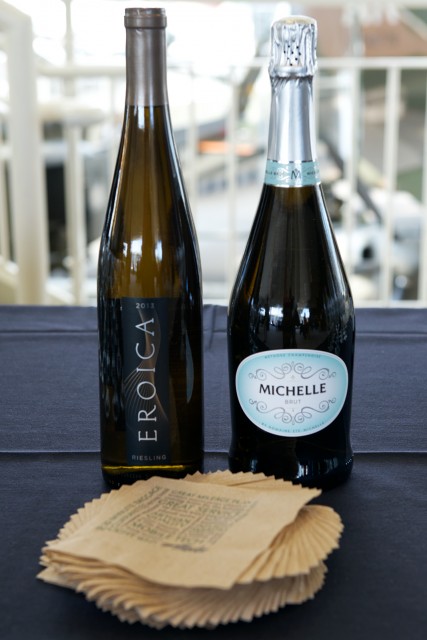
Seattle-area winery Chateau Ste. Michelle has formed a new partnership with Alaska Airlines – Photo: Bernie Leighton | AirlineReporter
Inside the Museum of Flight at Boeing Field, Alaska got the party started with wine from their newest partner, Chateau Ste. Michelle, along with Beecher’s cheese.
After enjoying the ground party, we were ready to head into the sky. We began to head back to the parking lot (yes, the parking lot) to embark on our flight.
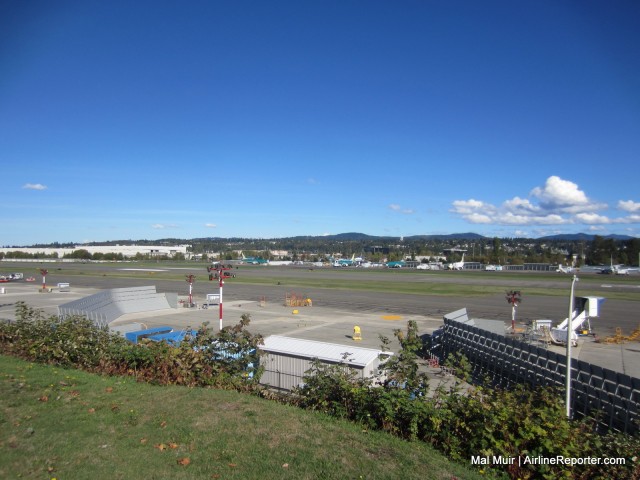
Renton Municipal Airport, home of the Boeing 737
In the past, we have featured plane spotting guides for Paine Field and also other airports like Anchorage or Tokyo Haneda. With numerous airports in the Seattle area, including SeaTac and Boeing Field, there is sometimes a forgotten, but quite important, airport for plane spotters which provides a continuous stream of aircraft to spot. I am speaking of Renton Municipal Airport, the home of Boeing’s narrow-body aircraft plant.
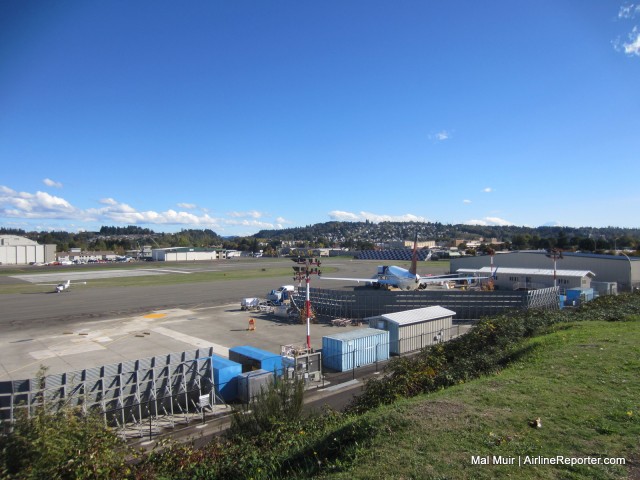
The southern threshold of Renton’s runway
The Renton Airport traces its history back to World War II. Originally built on reclaimed land from Lake Washington, the airport was built by the Department of Defense (DoD) to support Amphibious Aircraft being built by Boeing on Lake Washington. The PBB Sea Ranger project was cancelled after the prototype was built, so Boeing ended up using the facility to produce the B-29 Superfortress. By the end of the war, a total of 1,119 were built.
After the war, the City of Renton purchased the airport back from the DoD for $1 and the facility laid dormant for a few years. In 1948, the KC-97 Stratofreighter project brought the airport back to life and thus began a long and productive history of aircraft to flow out of the Boeing factory doors. The first Dash 80 aircraft, famous for the barrel roll over Lake Washington, rolled out in May 1954. Renton was the home of every single 707 built.
The 727 & 757 were all built there as well. However, Renton is famous these days for being the home of the 737, where production stands at a massive 42 aircraft per month.
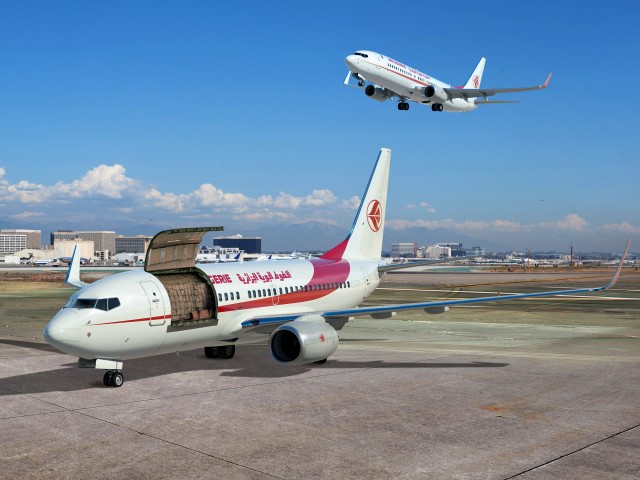
Composite image of an Air Algerie Boeing 737-700C – Image: Boeing
The Boeing 737-700C is an interesting aircraft. What makes it unique is its ability to convert from passengers to cargo depending on how the airline wants to use it. If you have heavy passenger flow during the summer, but more cargo during the winter, being able to convert between the two is quite helpful.
What also makes the 737-700C unique is that, like the Boeing Business Jet (BBJ), it has strengthened wings, different than the standard passenger 737-700. When in passenger configuration, the plane can hold 120-140 seats and fly 3,205nm. In an all-cargo set up, it can haul 40,000 pounds and fly 2,880nm.
The model was launched back in September 1997, when the US Naval Reserve ordered two and called them the C-40A Clipper. This was a big deal, since there had not been a convertible version of the 737 built from the Next Generation-version of the 737 at the time.
The US Navy currently operates 12 C-40As to move personnel and supplies around the world. Think of it as an airliner for the military.
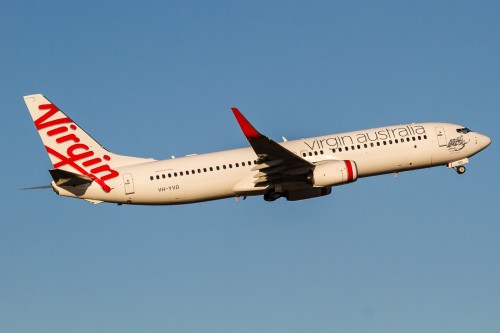
Virgin Australia’s new livery showcasing their transition to a premium-focused carrier Photo: Jacob Pfleger | AirlineReporter
VIRGIN AUSTRALIA BUSINESS CLASS REVIEW BASICS:
Airline: Virgin Australia
Aircraft: Boeing 737-800 (VH-YIF)
Departed: Brisbane Airport (BNE)
Arrived: Sydney Kingsford Smith Airport (SYD)
Stops: Non-stop flight
Class: Business class
Seat: 1F
Length: About 1.5 hours
Cheers: Fresh and funky looking cabin interior and great catering for such a short flight
Jeers: No foot-rests and no curtain divider thus limiting privacy
Overall: A great new business product on the Australian domestic market which with a few improvements will give competitors a run for their money.
During the last two years, perhaps no other airline has gone through as much transformation as Virgin Australia. Starting off as the first true low-cost carrier (LCC) in Australia in 2000 (then known as Virgin Blue) it quickly became a popular choice for leisure travelers. As the Australian market became more saturated with LCCs, Virgin decided it was time to remodel and focus more instead on the premium market. This transformation included the introduction of a business class across the fleet, with all aircraft having completed the re-fit by the 3rd quarter of 2013.






